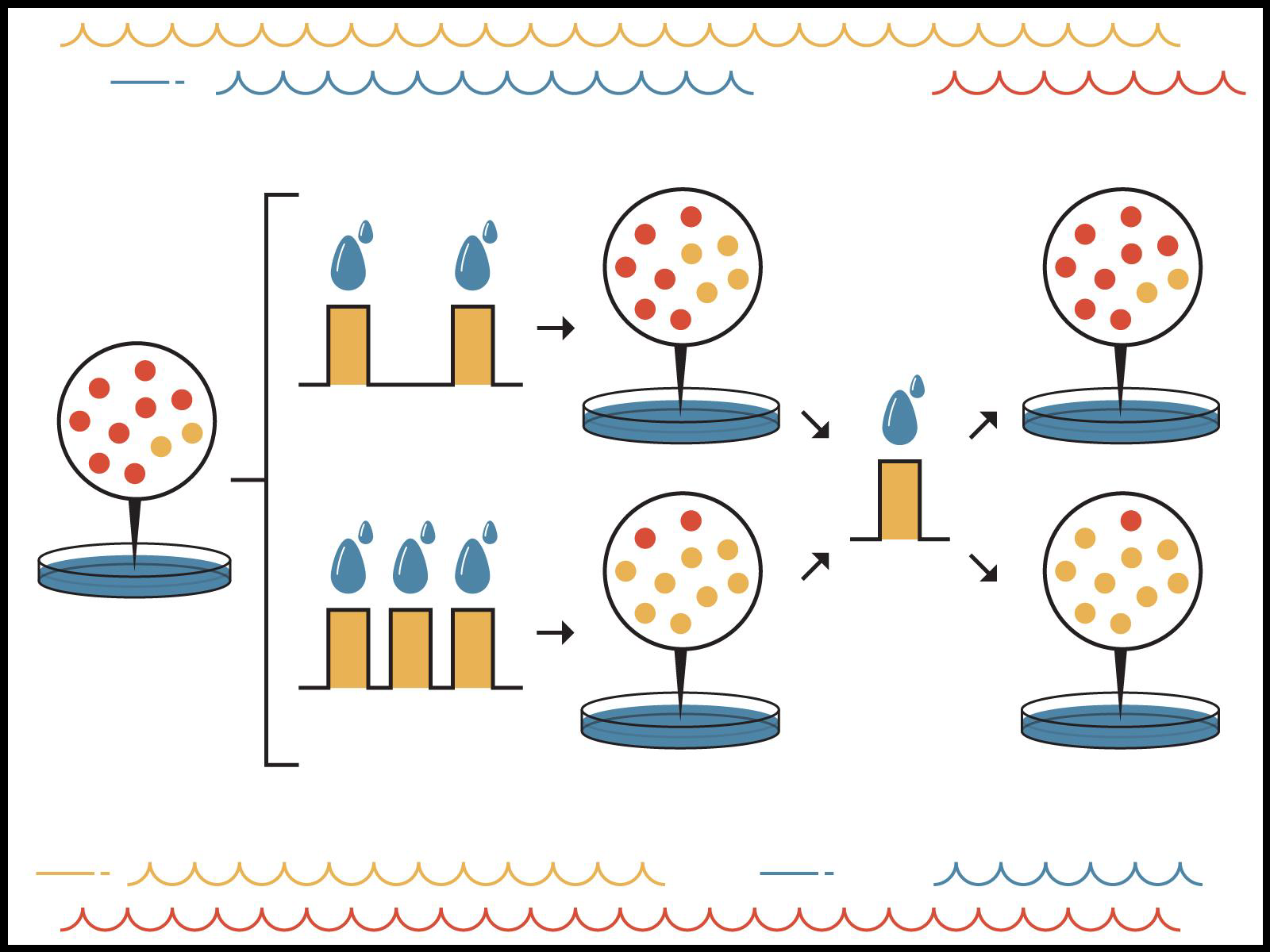Simulations Indicate that a History of Flooding Affects Microbial Resilience
New microbial community model reveals previous exposure to hydrologic variation influences a species’ specialized biogeochemical functions

Historical contingencies in microbial response to hydrologic variation can lead to compositional and functional shifts in microbial communities.
(Illustration by Stephanie King | Pacific Northwest National Laboratory)
The Science
In river corridors, it is known that interactions between moving water and microbial metabolism drive the cycling of dissolved organic matter, and that microbial communities’ experiences with previous drought or flooding conditions influence their functional responses. However, exactly how previous experiences to perturbation, called historical contingencies, influence microbial function are not well understood. To address this issue, a multi-institutional team designed a mathematical model of the growth of two microorganisms with distinct traits as a function of flow rates. The model correctly simulated distinct compositional and functional shifts in the function of the microbes that resulted from exposure to different frequencies of past flooding events, but it also revealed new aspects of microbial resilience. For example, historical contingencies had greater impact for specialized functions of the microbes that are uniquely performed by individual species than for common functions shared among many members of a community.
The Impact
The predictions in this work indicate the distribution of microbial growth traits among member species control a community’s functional response to hydrologic changes. This model reveals how hydrology, microbiology, and biogeochemistry interact in the context of historical contingencies, and it also provides a specific model structure for parameterizing resilience and historical contingency. Results will be useful for predictive ecological and biogeochemical modeling.
Summary
Describing the connections between microbial and hydrological processes in biogeochemical models is challenging because historical contingencies add complexity to current microbial processes. To better understand how the history of hydrologic perturbations drive the composition and functions in microbial communities, the research team designed a mathematical model of two species with distinct growth traits: one grows effectively in higher flow rates while the other grows better in lower flow rates.
The team simulated cyclic inundation of the community at different frequencies, which naturally shifted the community’s function and composition. Then the researchers flooded each perturbed community and measured its time-to-recovery. They found that a microbial community’s compositional and functional resilience could be driven by its history of inundation.
These historical contingencies were more pronounced for specialized community functions associated with individual member species compared to common functions among many species. Endogenous compositional dynamics, or continued changes in microbial populations in the absence of environmental variation, was a key mechanism enabling functional resilience. The team further showed how hysteresis can occur as an outcome of historical contingency. The new findings obtained from lab-scale model simulations were consistent with the field observations that motivated this work, indicating that the resulting model can serve as a useful tool for understanding the impact of historical contingencies in microbial and biogeochemical processes across scales.
Contact
Tim Scheibe
Pacific Northwest National Laboratory
tim.scheibe@pnnl.gov
Funding
This research was supported by the U.S. Department of Energy, Office of Science, Biological and Environmental Research, Environmental System Science program through subcontract to the River Corridor Scientific Focus Area project at Pacific Northwest National Laboratory.
Related Links
Github page for data and model sharing: https://github.com/hyunseobsong/history
Published: September 27, 2021
H.-S. Song, et al., “Historical Contingency in Microbial Resilience to Hydrologic Perturbations.” Frontiers in Water 3, 590378 (2021). [DOI: 10.3389/frwa.2021.590378]